How many users around the world use your products? Are they all speaking the same language? Which countries are they from? Have you ever wondered whether people from different cultures and languages will be able to understand your products? These are common questions for global companies that use a process called localization.
What is localization?
Localization means adapting any product to a specific country or region. Localization, therefore, is not just about translating content into different languages, it’s also about considering a user’s cultural context and how that might impact their experience of a product.
Here’s a real-life example: Did you know every country has its own keyboard? Because of differences in language and culture, not only is the order of the letters different, but also the placement of the functional buttons.
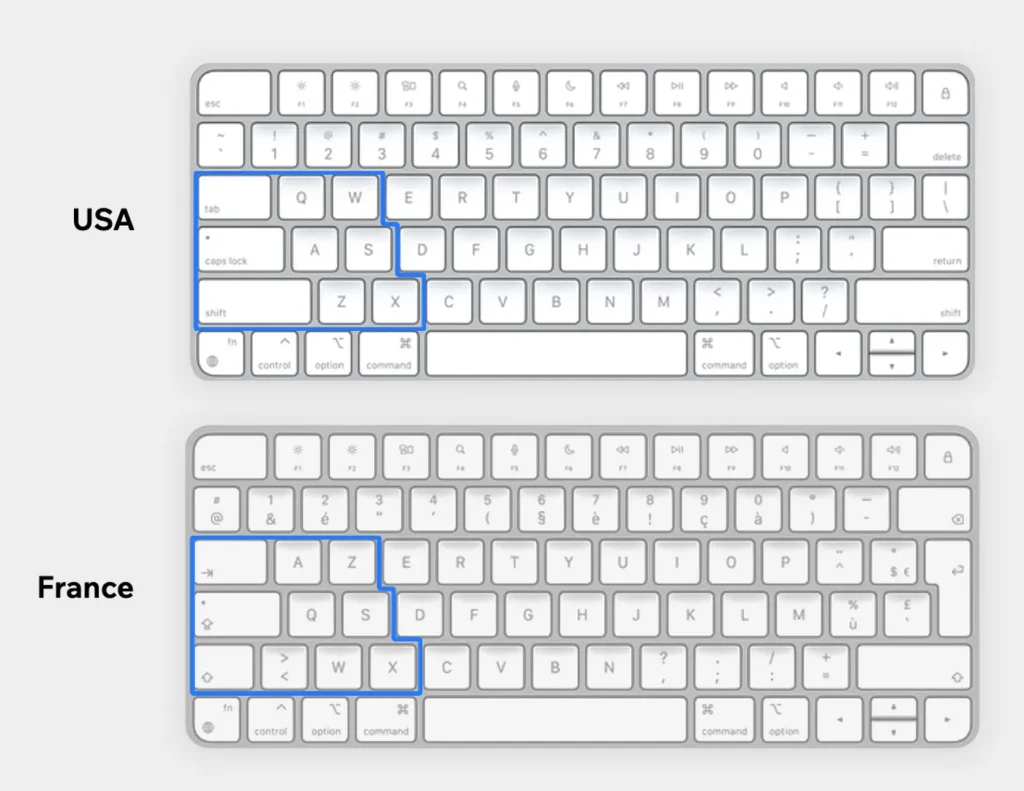
Wix is a company with more than 238 million users but only around 35% of them are English speakers. Because the majority come from non-English speaking countries, it’s important to provide the most localized experience possible. Good localization builds trust with users which has long-term benefits for the business.
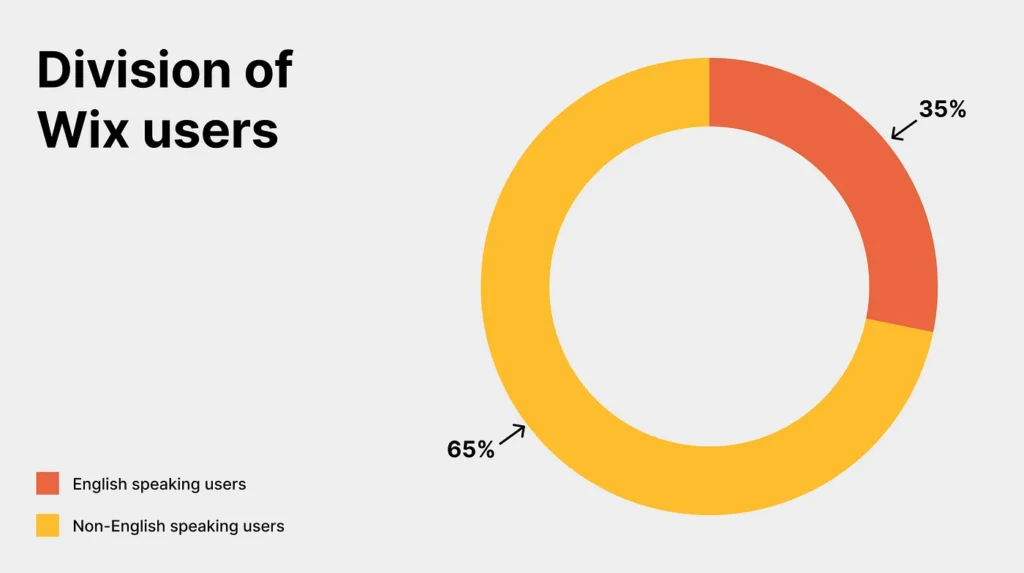
Adapting the Wix onboarding experience to a country’s culture
An example of successful localization can be found in the first stages of creating a new website on Wix. At this point, we ask the user a number of questions to adjust the site settings to their specific needs.
Yet the way we address users can make a difference in their interactions with Wix. Germans, for example, are very reluctant to answer questions online, particularly more personal questions. We had to figure out the best way to get information from these users to put them at ease and help them optimize their sites.
First, we turned the questions into tasks and decided to add a short sentence under each task to reassure the user as they complete the process to the end.
These changes resulted in a considerable increase in identified German users who got a personalized experience in the next steps. This clearly illustrates how localizing is more than simply translating: it is about adapting to a country’s cultural and social norms and creating a tailored experience for specific users from a specific place.
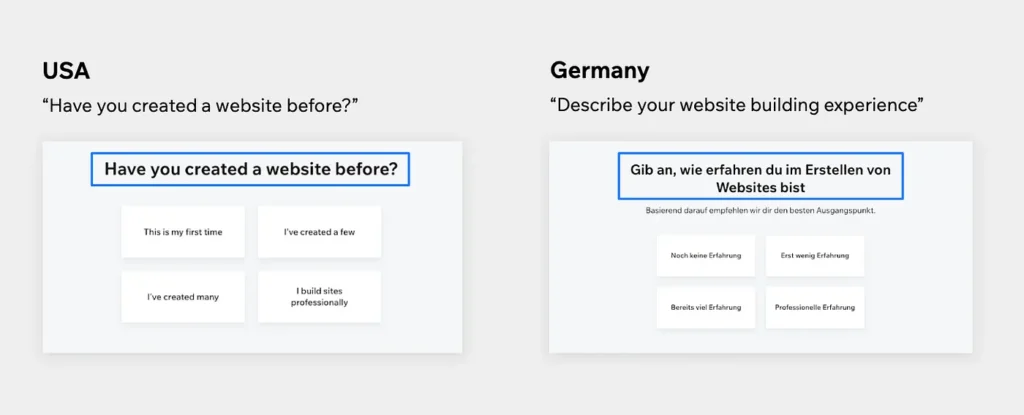
What does a tailored localization experience look like at Wix?
Adding localized domain endings
Our users can buy a custom domain from Wix, allowing them to improve their site’s online presence. To effectively engage with their local audience, it’s important for our users to have a local domain extension (for example domainame.fr for France or domainame.com.br for Brazil).
This is why we support many country domain extensions, and this year we added three more: .it for Italy, .ca for Canada, and .com.au for Australia.
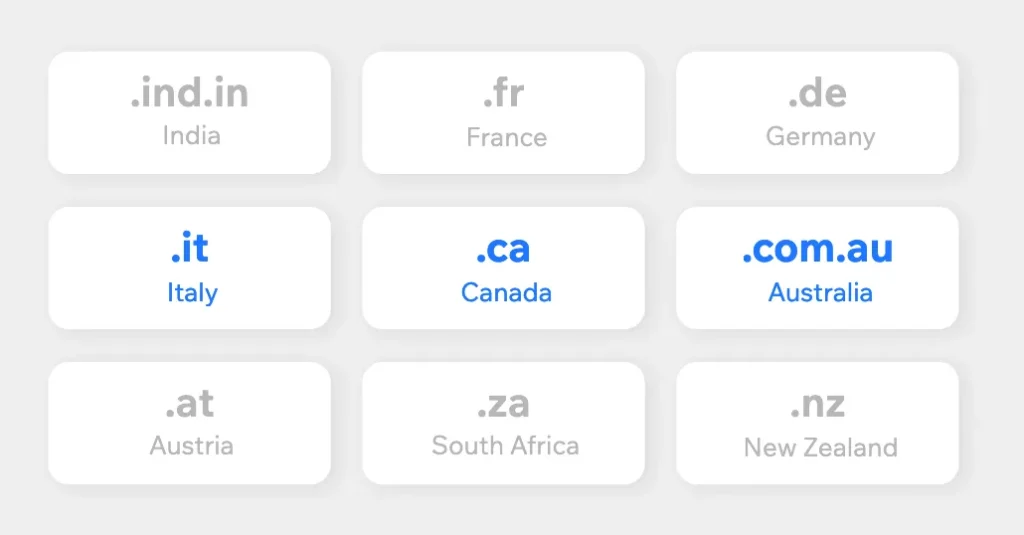
Localization of Wix pricing page for Japan and France
We conducted in-depth research on two of our focus markets — Japan and France — to see what improvements we could make to provide users with a better user experience and increase conversion.
The Japanese market research was conducted by different teams within Wix including a team based locally in Japan. We reached the conclusion that to best serve the market according to its habits, we needed to make two major UX alignments:
First, to align with the common typography hierarchy in Japan we switched the order of the title and subtitle.
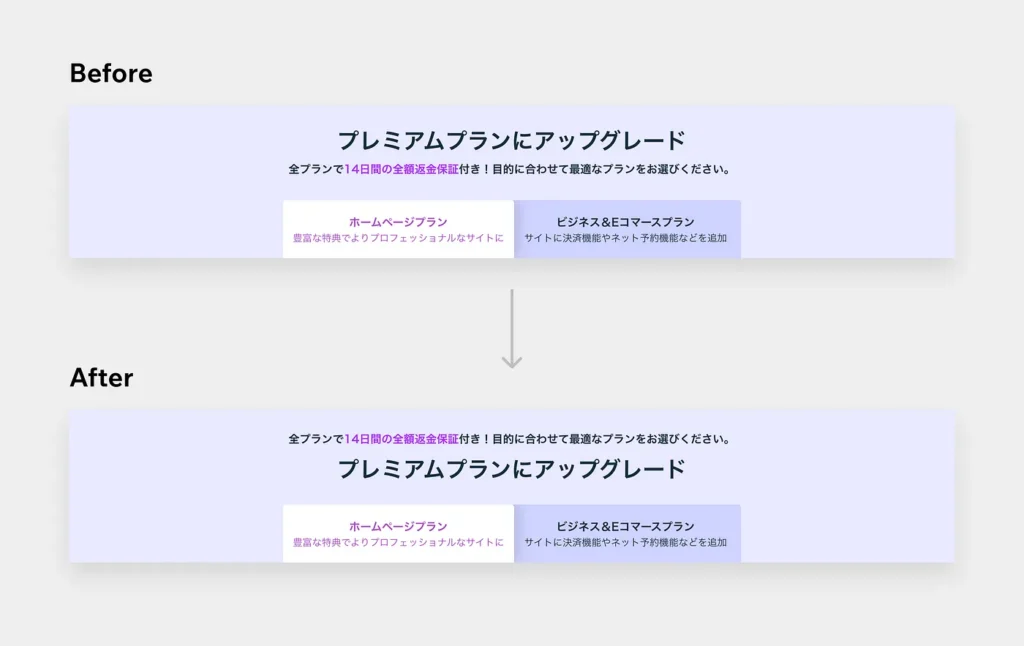
Secondly, since Japanese users prefer all information to be visible, we took any information that was hidden inside tooltips and added it under the name of the feature.
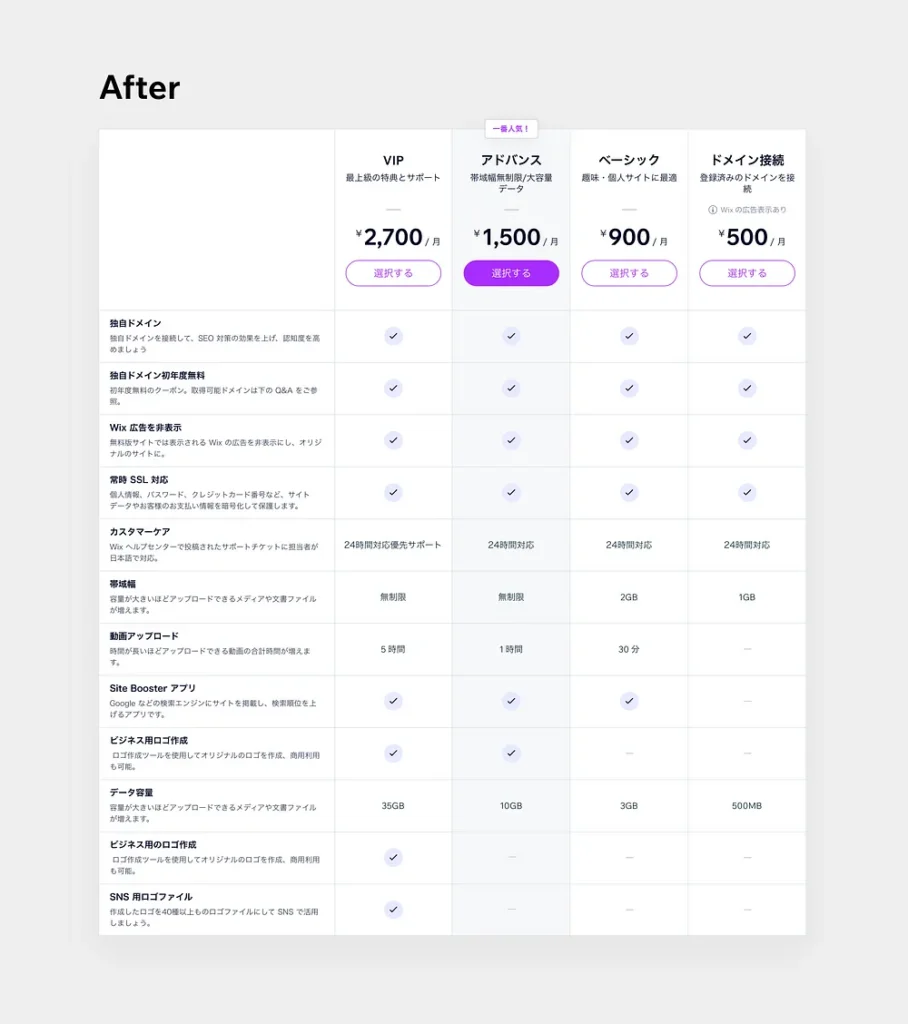
In France, our goal was to gain the trust of local users using our pricing plans to communicate that the Wix platform is certified and trustworthy.
Since Afnic, the French internet domain registry association recommends Wix as a trusted platform for building websites, we created a banner promoting the reliability of Wix as a site platform.
Our hope was that these additions would make Japanese and French users feel more confident in our services, and indeed we were pleased to see that these users selected Premium plans with a greater value for their business and website needs.
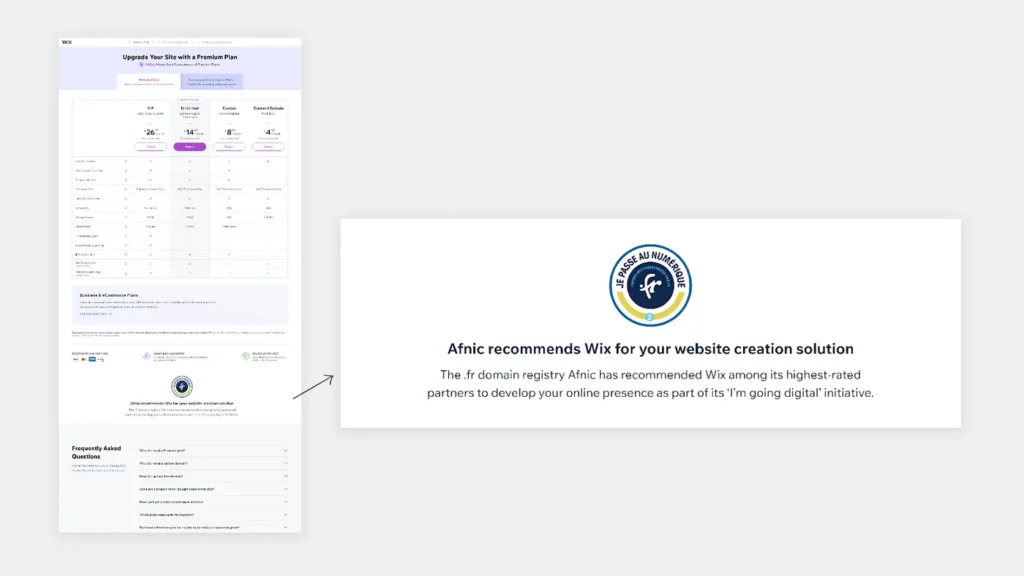
Enabling Boleto Bancario for Wix’s Brazilian users
A final example of impactful localization can be seen in the payment options presented when purchasing a Premium plan. Users around the world are all familiar with their country’s own local payment methods.
A few years ago we gave Brazilian users the option to pay with Boleto Bancario, an offline payment method commonly used in Brazil. Introducing this option to our Brazilian users led to an increase in the number of users using Boleto Bancario for Wix products.
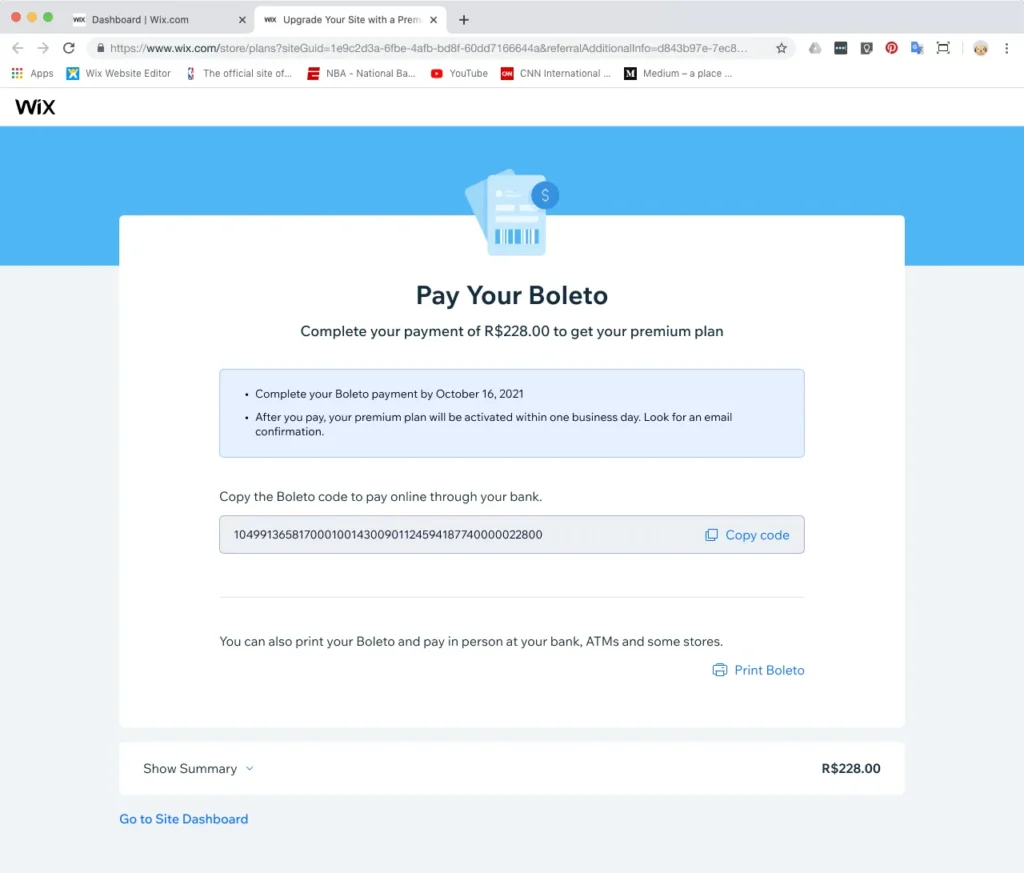
How to promote localization in your own company
- Raise awareness of the importance of localization and the value it will give to your users and business.
- Know where your users are from and consider issues such as language, cultural sensitivity, currency, date formats, gender, and local etiquette.
- Attribute resources to localization and involve them in your work after the wireframe step and before UI implementation, so they can raise red flags in early stages (about such issues as the length of certain languages or the direction of writing).
By integrating localization into the product lifecycle process at early stages, we can optimize user experience and improve business results.
A special thanks to Leslie Taussig, my team’s Localization Operations Manager, who worked closely with me on the formulation of the concepts that shaped this article and whose contributions and feedback were invaluable throughout the writing process.
Article edited by Sarah Friedman Sorek.
This article was originally published on WixUX.





